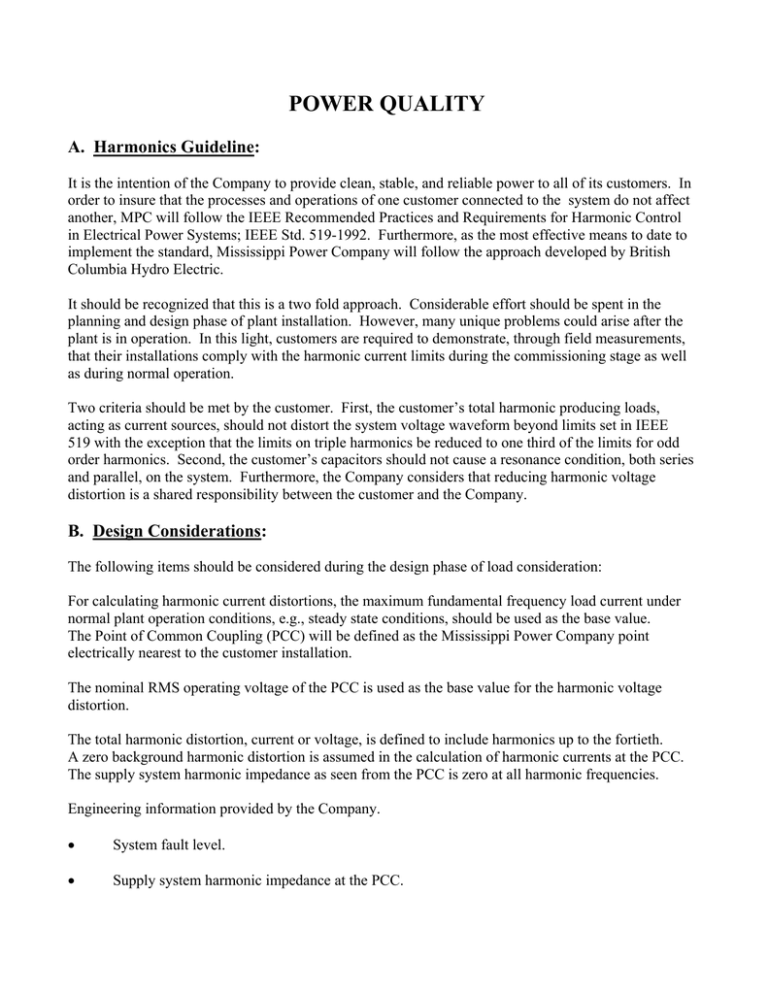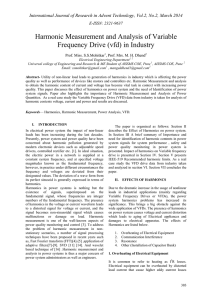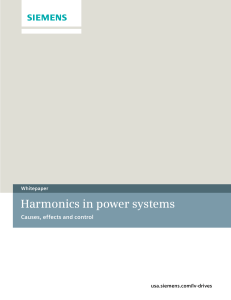power quality - Mississippi Power
advertisement

POWER QUALITY A. Harmonics Guideline: It is the intention of the Company to provide clean, stable, and reliable power to all of its customers. In order to insure that the processes and operations of one customer connected to the system do not affect another, MPC will follow the IEEE Recommended Practices and Requirements for Harmonic Control in Electrical Power Systems; IEEE Std. 519-1992. Furthermore, as the most effective means to date to implement the standard, Mississippi Power Company will follow the approach developed by British Columbia Hydro Electric. It should be recognized that this is a two fold approach. Considerable effort should be spent in the planning and design phase of plant installation. However, many unique problems could arise after the plant is in operation. In this light, customers are required to demonstrate, through field measurements, that their installations comply with the harmonic current limits during the commissioning stage as well as during normal operation. Two criteria should be met by the customer. First, the customer’s total harmonic producing loads, acting as current sources, should not distort the system voltage waveform beyond limits set in IEEE 519 with the exception that the limits on triple harmonics be reduced to one third of the limits for odd order harmonics. Second, the customer’s capacitors should not cause a resonance condition, both series and parallel, on the system. Furthermore, the Company considers that reducing harmonic voltage distortion is a shared responsibility between the customer and the Company. B. Design Considerations: The following items should be considered during the design phase of load consideration: For calculating harmonic current distortions, the maximum fundamental frequency load current under normal plant operation conditions, e.g., steady state conditions, should be used as the base value. The Point of Common Coupling (PCC) will be defined as the Mississippi Power Company point electrically nearest to the customer installation. The nominal RMS operating voltage of the PCC is used as the base value for the harmonic voltage distortion. The total harmonic distortion, current or voltage, is defined to include harmonics up to the fortieth. A zero background harmonic distortion is assumed in the calculation of harmonic currents at the PCC. The supply system harmonic impedance as seen from the PCC is zero at all harmonic frequencies. Engineering information provided by the Company. • System fault level. • Supply system harmonic impedance at the PCC. • Background harmonic voltage distortion at the PCC. C. Conclusions: In conclusion, the harmonic levels outlined in IEEE 519 should be adhered to by the customer. It is the customer’s responsibility to insure that the criteria are met and that the levels are adhered to. Furthermore, it is the customer’s responsibility to ensure that his equipment operates successfully as well as within the original design criteria set forth.







